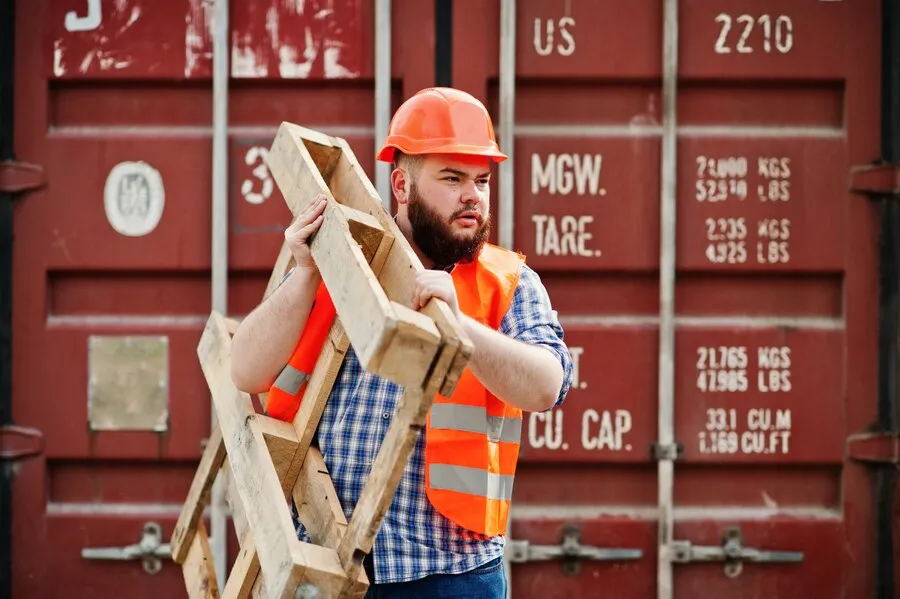Table of Contents
Shipping containers have revolutionized global trade, logistics, and even architecture. From transporting goods across oceans to serving as eco-friendly homes and offices, shipping containers are versatile and durable structures with a broad range of applications. In this guide, we’ll dive into the history, types, uses, and innovative adaptation of shipping containers to help you understand why these steel boxes have become a staple today.
A Brief History of Shipping Containers
The modern shipping container, as we know it, was invented in the 1950s by American entrepreneur Malcolm McLean. McLean’s idea was to create a standardized metal container that could easily be transferred between trucks, ships, and trains. This innovation dramatically reduced the time and cost associated with loading and unloading goods from ships, paving the way for the rapid growth of global trade. Before containers, goods were manually loaded onto ships, often taking hours or even days, which made international shipping slow and expensive. The introduction of containers helped streamline logistics and make international trade more efficient.
Types of Shipping Containers
Several types of shipping containers are designed to suit various types of cargo and shipping requirements. The most common is the standard dry container, typically made of steel and used to transport general cargo. These containers are available in sizes such as 20 feet and 40 feet, providing a versatile and weatherproof solution for everyday shipments. Refrigerated containers, also known as reefers, are equipped with refrigeration units, making them ideal for transporting perishable goods like food and pharmaceuticals. Open-top containers are designed with a removable or convertible roof, which allows for easy loading of bulk materials or large equipment. Flat rack containers have no sides or tops and are often used for transporting heavy or oversized items like vehicles and industrial machinery. Finally, high cube containers are similar to standard dry containers but offer extra height, providing additional space for larger cargo.
Common Uses of Shipping Containers
While shipping containers are best known for their role in international trade, their applications extend far beyond logistics. One of the most common uses of shipping containers is storage. Due to their durable and secure construction, they are ideal for both personal and business storage solutions, providing a safe place to store goods for extended periods. Shipping containers are also being repurposed as homes, offices, and even schools. Their robustness makes them a great option for low-cost, sustainable housing, and they are increasingly popular in the architecture world for creating modular and eco-friendly living spaces. Additionally, businesses are using shipping containers as pop-up shops and mobile cafes. The compact nature and portability of containers allow them to be used as temporary retail spaces that can be relocated as needed. Lastly, in times of crisis, shipping containers have been used as emergency shelters, offering rapid housing and medical facilities in disaster-stricken areas.
Sustainability and Environmental Impact
In recent years, shipping containers have gained attention for their sustainability, particularly when repurposed for housing or businesses. Containers are made of steel, which is highly recyclable, and their modular nature allows for efficient use of space and resources. Upcycling used shipping containers into homes or offices reduces waste and minimizes the environmental impact of construction projects. Additionally, when properly insulated, these containers can be energy-efficient, reducing heating and cooling costs. This growing trend of container-based structures provides a more eco-friendly alternative to traditional construction methods, aligning with the increasing demand for sustainable building solutions.
Also Read: Accelerated Logistics Corp Elp: Elevate Freight and Shipping
The Future of Shipping Containers
The future of shipping containers looks promising as their versatility continues to be recognized and embraced by industries beyond logistics. With a rising interest in sustainable living, more people will likely turn to shipping containers as a cost-effective and eco-friendly option for housing and commercial spaces. Innovative projects, such as urban farming and creative housing solutions, are already being developed using shipping containers. Additionally, as global trade expands, the need for efficient and reliable shipping containers will continue to grow. The possibilities for shipping containers are endless, and as their use evolves, we can expect to see even more creative and sustainable applications in the future.
If you’re looking for high-quality shipping containers in Atlanta, GA, you can find reliable options at https://usedconex.com/shipping-containers-in-atlanta-ga/. They offer a wide range of containers suited to various needs, whether you’re interested in storage, construction projects, or creative uses like building a home or office.
Shipping containers have come a long way since their invention, and their versatility ensures they will remain a vital part of industries like transportation, construction, and design. Whether used for global trade, storage, or as innovative living and business spaces, shipping containers continue to prove their durability, affordability, and adaptability across various applications.


